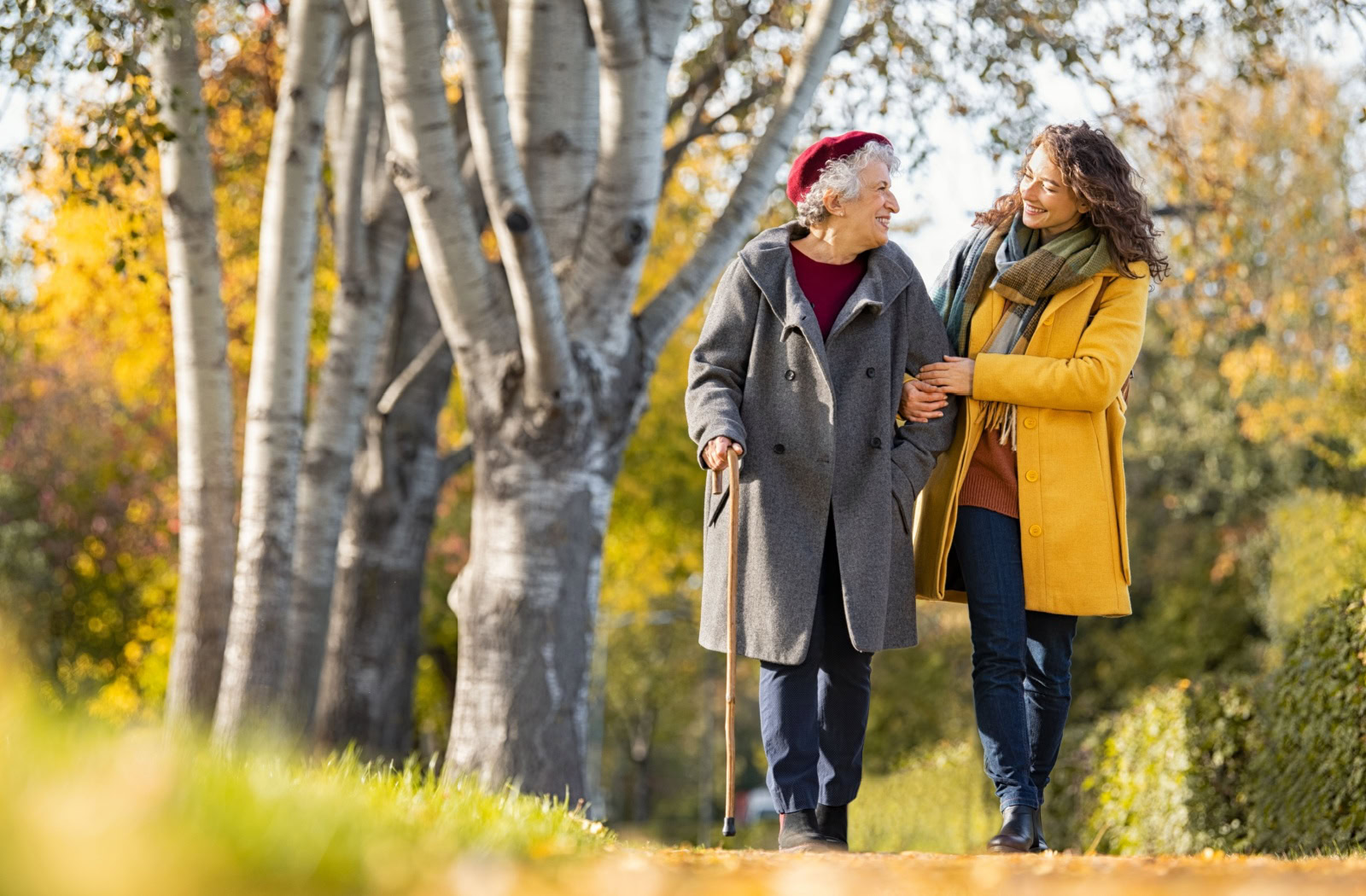How Walking Improves Overall Health for Seniors
- Posted on
- By Mira Vie Senior Living

An easy and convenient exercise for seniors is the simple act of walking. This low-impact form of exercise is ideal for seniors and younger people who cannot perform more vigorous forms of exercise.
Regular walking improves overall health for seniors in a couple of ways:
- Improved heart health
- Enhanced bone density and joint mobility
- Promotes balance and a reduced fall risk
- Lowers stress levels
- May boost cognitive function
- Helps dispel loneliness
With an activity as straightforward as walking providing so many tangible benefits, it’s no wonder that so many seniors can benefit. One important note about any exercise—even something as safe as walking—is that you should always consult your doctor before beginning any new exercise regime.
Why Walking Is an Ideal Exercise for Older Adults
Of all the possible fitness activities for seniors, walking is one of the top choices for good reasons:
- Less stress on joints. Walking is typically easy on the body and reduces the risk of injuries, which are more common in high-impact activities like running or weightlifting.
- Convenient. You don’t need expensive equipment or gym subscriptions. All you need is determination and a comfortable pair of shoes. You don’t even have to go outside because many senior communities offer fitness centers with treadmills and walking pads.
- Adaptable. The speed and duration of your walk can be easily adjusted according to your fitness level, making it a fitting exercise for older adults.
The Physical Payoffs of Walking Daily
From brisk walks to leisurely strolls, walking offers seniors a range of physical advantages while minimizing the risk of injuries.
Improved Heart Health
Daily walking for 20 to 40 minutes can significantly boost heart health. It aids in reducing blood pressure, enhancing circulation, and lowering cholesterol, ultimately reducing the risk of heart disease.
Enhances Bone Density & Joint Mobility
Walking promotes bone density, which helps prevent diseases like osteoporosis. It also enhances joint mobility, crucial for maintaining flexibility and strength. These skeletal and joint benefits can be invaluable for managing arthritis symptoms and improving quality of life.
Promotes Balance & Reduces Fall Risk
Regular walking can strengthen leg muscles and improve coordination, which is essential for maintaining balance. This strengthening effect can lower the risk of falls, helping seniors preserve their independence and activity.
Aids in Weight Management
A walking routine and a nutritious diet can help maintain a healthy weight. Healthy weight is particularly important for seniors, as metabolism generally slows with age, potentially making it more challenging to manage one’s weight. A balanced diet can further support energy levels and maximize the benefits of regular physical activity.
The Mental Health Returns of Walking
Walking fuels physical fitness, but it can also enhance mental health.
- Eases stress and anxiety. Walking amidst nature can relieve anxiety and alleviate other stresses, thanks to the endorphins released during exercise.
- Boosts cognitive function. Research has shown a direct connection between walking and brain health. Regular walking may reduce the risk of cognitive decline and diseases like dementia.
- Fights loneliness. Walking in groups or with someone can help strengthen social bonds. It’s as much a social activity as it is physical exercise.

How to Start a Walking Routine
Begin your walking journey with a few simple steps:
- Select supportive shoes. A comfortable, cushioned pair of walking shoes is essential. Proper footwear can prevent discomfort and further reduce your risk of falling.
- Choose a suitable path. You should choose flat surfaces or well-maintained trails to ensure safety during your walk.
- Set your pace. If you’re new to walking, slowly and gradually increase speed and distance over time.
- Stay hydrated and equipped. Carry a water bottle and dress appropriately for the weather. Consider wearing a wide-brim hat on a sunny day, and don’t forget sunscreen and sunglasses for protection.
Building a Walking Community
Walking can be a fantastic way for seniors to connect with others. Here are a few suggestions to build relationships and make walking more enjoyable:
- Form a neighborhood walking group: Start a weekly walk with friends or neighbors.
- Join a club: Look for local walking clubs for older adults. A senior community is a good place to find a walking club.
- Participate in a local event: Charity walks, or park gatherings are a fun way to walk and meet new people.
Stay Active & Engaged as You Age
By fostering a walking community, seniors can improve their physical and mental health and form valuable social bonds that enrich their overall wellness and sense of community.
Take the first step towards a healthier, happier lifestyle. Reach out to Mira Vie Senior Living today to learn how we can assist you or your loved one in achieving wellness goals. Our team is here to offer personalized care and resources to support you on your journey. So, book a community tour; we’d love to show you around.
Related Articles

Travel Safety Tips for Seniors: Planning a Trip with Peace of Mind
Key Takeaways Plan ahead with your doctor and organize medications before you travel. Pack for